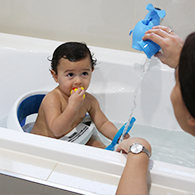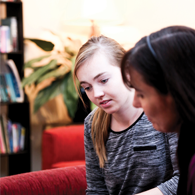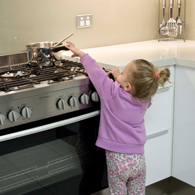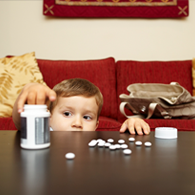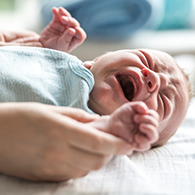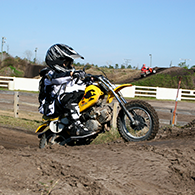Wheeled recreational devices
What are wheeled recreational devices?
Wheeled recreational devices include skateboards, foot powered scooters (scooters), roller skates and roller blades. These recreational items are very popular with children, young people and adults. While their movement and speed is powered by the user, they can travel quickly and are often used as a method of transport. Some scooters have a braking system but most devices rely on very basic user control systems for stopping or slowing the device.
How are children injured?
Falls
- Most injuries occur from falls and collisions with fixed objects or pedestrians. This is usually the result of losing control. Children may lose control as a result of a sudden or unexpected obstacle in their riding path.
- Children may lose control because they unable to stop. This is due to skateboards, rollerblades and roller skates not having brakes and scooters having limited braking capacity resulting from their small wheels.
Cuts, bruises, fractures and friction burns
- Children may sustain cuts, bruises, fractures and/or friction burns as a result of a crash/fall.
Motor vehicle accidents
- Serious injuries and fatalities can also result when children using the road are hit by motor vehicles.
How common are these injuries?
In Australia, 24,458 children aged 0-16 years were admitted to hospital over a 10 year period (2002-2012) as a result of falls from ice skates, roller skates, skateboards, scooters and other pedestrian conveyances.1
Between 2016 and 2017, 233 children were admitted to the Sydney Children’s Hospitals Network as a result of a fall of the same nature, making it the fourth most common reason for a fall related injury.2
At greatest risk are young children, learners and experienced users performing tricks at high speed.
The upper limbs and wrists are the most common areas of injury. Other areas include elbows, knees and the head.
Contributing factors to injuries are:
- speed
- obstacles
- being unable to stop
- steep slopes
- hard landing surfaces
- failure to wear protective equipment, such as helmets, knee pads, elbow pads, mouth guards and wrist guards.
What are the laws, regulations or standards for wheeled recreational devices?
There are no Australian Standards for these recreational items.
Although helmet use is not a legal requirement, it is highly recommended. Helmets that meet the Australian Standard for bicycle helmets (AS/NZS 2063:2008) can be worn.3 Dedicated skateboard helmets are better choice as they are designed to provide full coverage of the head including the lower back of the head. They are also constructed with solid material and include less or no ventilations, a feature necessary for bicycle helmets.
Road laws
The NSW Centre for Road Safety advises that boards, skates and blades are best used in designated areas, such as ramps and skate parks. Skates may be used on footpaths, regardless of the age of the user, unless there are signs that say they are not to be used in those areas.
Riders or skaters should keep to the left when on footpaths and give way to others on the path.
Skateboards and scooters can only be used on minor roads (those with no lane lines marked) that have a maximum speed limit of 50km during daylight hours.
As powered scooters are unable to be registered, they can only be used on private land.4
Remember:
|
References
1. Mitchell , R., Curtis, K., Foster, K,. (2017). A 10-year review of the characteristics and health outcomes of injury-related hospitalisations of children in Australia. Day of Difference Fountdation. University of Sydney: http://www.paediatricinjuryoutcomes.org.au/wp-content/uploads/2017/06/Australian-child-injury-report_FINAL-070617.pdf .
2. Kids Health Child Health Promotion Unit.(2019) Injury-related hospital admissions toSydney Children’s Hospitals Network (2016-2017). Sydney Children’s Hospitals Network. https://kidshealth.schn.health.nsw.gov.au/childhood-injury
3. NSW Transport (2018, January 8) Helmets and safety gear https://roadsafety.transport.nsw.gov.au/stayingsafe/bicycle-riders/helmets-gear.html
4. NSW Transport (2018, June 28) Skate boards, foot scooters and rollerblades https://roadsafety.transport.nsw.gov.au/stayingsafe/pedestrians/skateboardsfootscootersandrollerblades/
